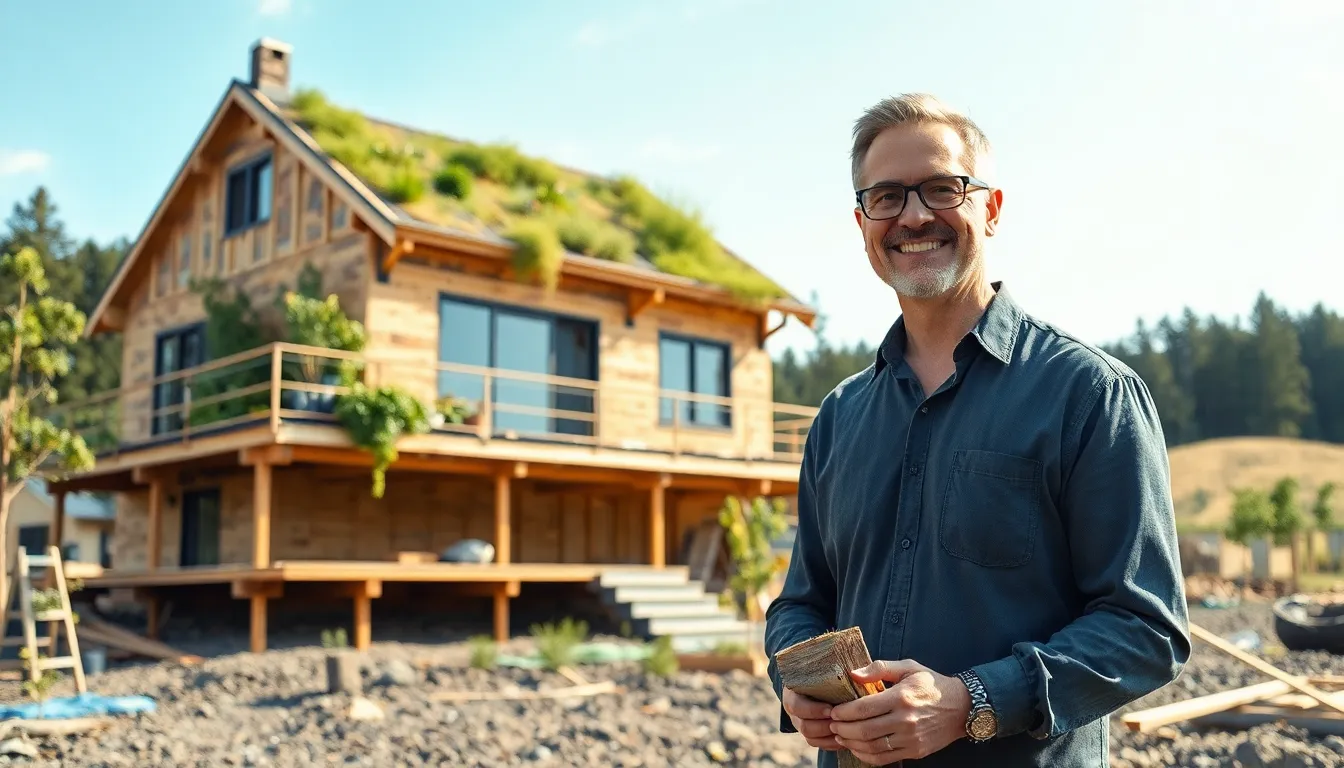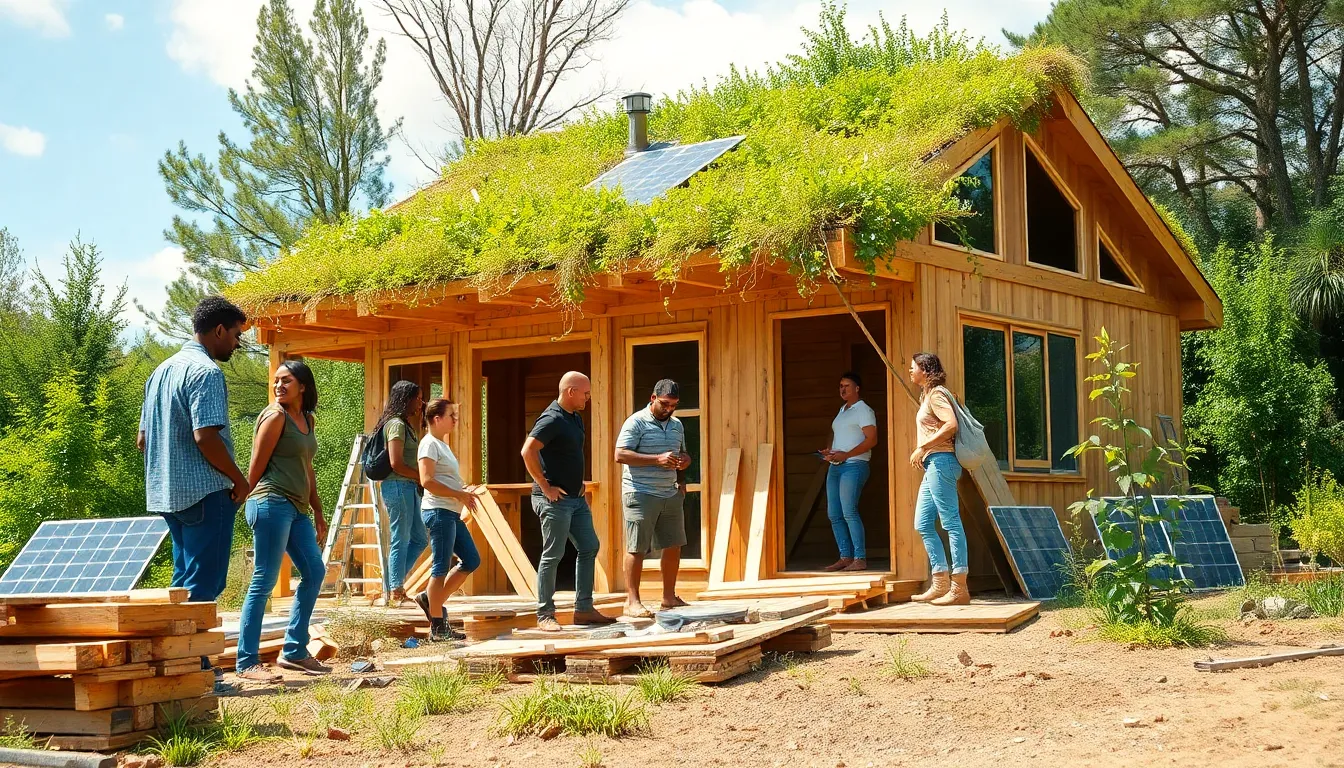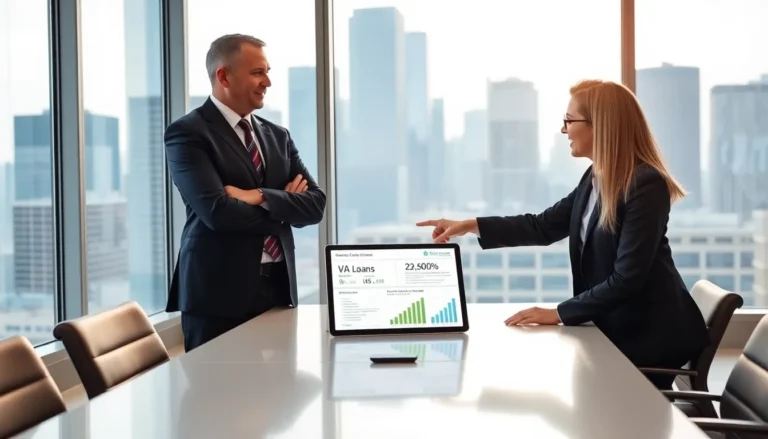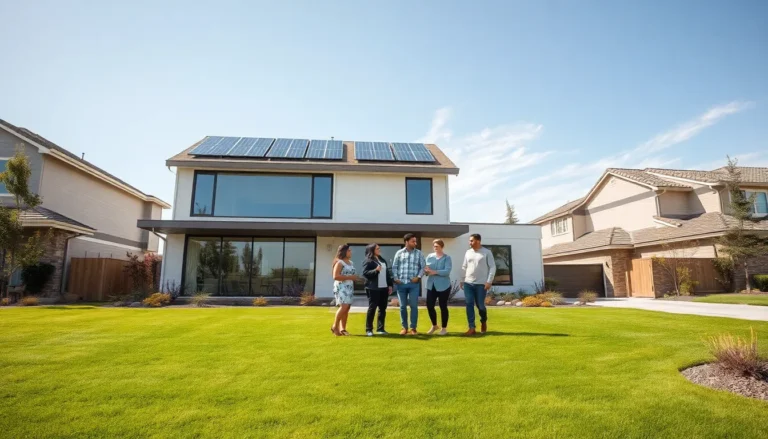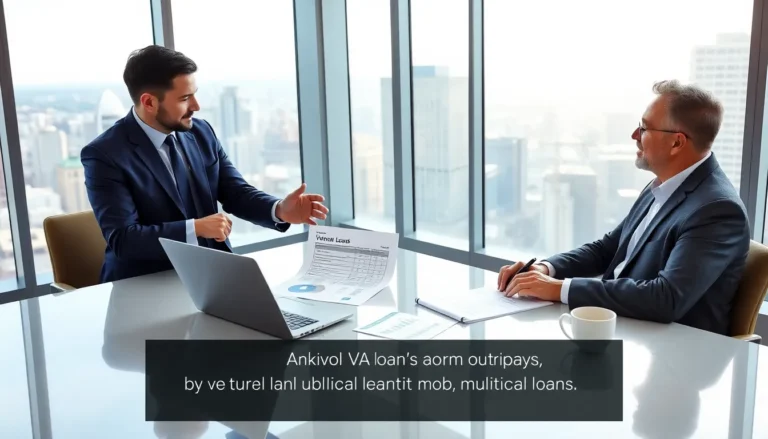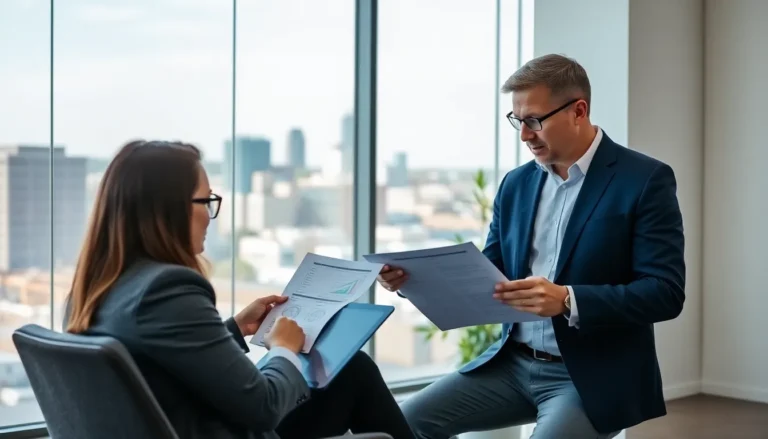Table of Contents
ToggleIn a world where the planet seems to be throwing a tantrum, eco-construction techniques are like the superhero we didn’t know we needed. Imagine building homes that not only shelter families but also hug trees and kiss the earth. Sounds like a dream, right? Well, it’s time to wake up and smell the recycled coffee grounds because sustainable building practices are here to save the day.
From using reclaimed materials to harnessing the sun’s power, eco-construction isn’t just a trend; it’s a lifestyle choice that benefits everyone. By embracing these techniques, builders and homeowners alike can create spaces that are as kind to the environment as they are stylish. So why not join the green revolution? After all, who wouldn’t want a home that’s not just eco-friendly but also a conversation starter at dinner parties? Let’s dive into the world of eco-construction and discover how to build a better future, one brick at a time.
Overview of Eco-Construction Techniques
Eco-construction techniques focus on sustainable building practices that minimize environmental impact. Reclaimed materials play a crucial role, offering a way to reduce waste while providing unique aesthetics. Using renewable energy sources, like solar panels and wind turbines, helps decrease reliance on fossil fuels.
Natural insulation materials, such as straw bales and wool, enhance energy efficiency without harmful chemicals. Rainwater harvesting systems collect and reuse water, thereby promoting conservation. Green roofs not only provide insulation but also reduce stormwater runoff and improve air quality.
Utilizing sustainable building methods like modular construction promotes efficiency and reduces resource consumption. Passive solar design takes advantage of natural sunlight, lowering heating and cooling costs. Advanced framing techniques optimize materials and streamline labor, resulting in cost savings.
Certifications, such as LEED and BREEAM, validate eco-friendly practices and encourage transparency in construction processes. These certifications highlight a commitment to sustainability, appealing to environmentally conscious buyers. By choosing eco-construction, builders contribute to a healthier planet while creating stylish, functional spaces.
Community engagement in eco-construction initiatives fosters awareness and education. Collaborative projects often lead to innovation and experimentation with new materials and techniques. Prioritizing eco-friendly solutions not only addresses immediate challenges but also secures a sustainable future for generations to come.
Benefits of Eco-Construction Techniques
Eco-construction techniques offer numerous advantages across environmental, economic, and social dimensions. These benefits underscore the importance of adopting sustainable building practices.
Environmental Impact
Eco-construction significantly reduces carbon footprints. It employs materials like reclaimed wood, which minimizes waste and pollution. Renewable energy sources, such as solar panels, decrease reliance on fossil fuels. Natural insulation materials regulate temperature effectively, lowering energy consumption. Green roofs mitigate urban heat island effects and manage stormwater. Ecosystem preservation occurs through thoughtful site selection and design. Incorporating these strategies contributes to a healthier environment for all.
Economic Advantages
Cost savings manifest through lowered energy bills. Eco-friendly buildings often achieve greater energy efficiency, reducing monthly expenses. Governments provide incentives like tax credits for sustainable construction projects. Property values tend to appreciate faster in eco-friendly developments, appealing to environmentally conscious buyers. Durability in eco-construction materials leads to reduced maintenance costs over time. Investments in sustainable practices typically yield high returns, promoting long-term financial benefits.
Social Benefits
Community engagement increases with eco-construction projects. These homes foster a sense of belonging and responsibility among residents. Health becomes a priority, as such buildings often feature better indoor air quality and natural lighting. Education about sustainability becomes more prevalent, encouraging shared values. Green spaces associated with eco-friendly developments create recreational areas, enhancing overall well-being. These social dynamics contribute to stronger, more connected communities.
Popular Eco-Construction Techniques
Various eco-construction techniques contribute to sustainable building practices that effectively address environmental challenges.
Sustainable Materials
Sustainable materials significantly reduce ecological footprints. Reclaimed wood, bamboo, and recycled steel showcase a commitment to environmental preservation. Natural materials like straw bales and rammed earth also provide excellent insulation and durability. By utilizing these resources, builders reduce waste and minimize the extraction of new materials. Certifications like Forest Stewardship Council ensure responsible sourcing. Local sourcing of materials further decreases transportation emissions while supporting community economies.
Energy-Efficient Designs
Energy-efficient designs optimize the use of resources while enhancing comfort. Passive solar design harnesses sunlight for natural heating and lighting. Strategically placed windows maximize daylight, reducing the need for artificial light. Insulation made from eco-friendly materials promotes energy conservation by keeping indoor temperatures stable. Innovative technologies, such as smart thermostats, adapt energy usage to individual habits, lowering overall consumption. Green architecture not only improves aesthetics but also creates healthier living environments.
Waste Reduction Strategies
Waste reduction strategies play a crucial role in eco-construction. Construction and demolition waste diversion from landfills decreases overall waste disposal. Reusing materials on-site minimizes the demand for new resources. Implementing composting systems for organic waste further enhances sustainability. Builders often adopt modular construction, enabling efficient prefabrication that limits waste. Educating stakeholders about effective waste management practices fosters a culture of sustainability within the community.
Challenges in Implementing Eco-Construction Techniques
Implementing eco-construction techniques presents various challenges that stakeholders must address to promote sustainable building practices effectively.
Cost Considerations
Cost plays a significant role in the adoption of eco-construction techniques. Initial expenses for sustainable materials and technologies can exceed traditional building methods. While long-term savings occur through reduced energy bills and maintenance costs, upfront investment deters some developers and homeowners. Sustainable materials like reclaimed wood or bamboo, though beneficial, often carry higher price tags. Additionally, specialized labor skilled in eco-construction methods can lead to increased labor costs. Budget constraints often limit the integration of advanced technologies, such as solar panels or energy-efficient systems. Despite these challenges, understanding potential financial incentives from government programs can aid decision-making.
Regulatory Hurdles
Regulatory hurdles present another layer of complexity in eco-construction. Local building codes and zoning laws sometimes lack provisions for innovative sustainable practices. Outdated regulations may restrict the use of specific materials or construction methods. Permitting processes can further complicate timelines and project expenses, leading to delays that discourage eco-friendly initiatives. Navigating these regulations requires thorough research and potentially engaging legal expertise, which adds to project costs. Insights into certification programs, like LEED or BREEAM, can facilitate understanding of compliance requirements. Collaborative efforts with local authorities can foster changes in regulations, paving the way for broader acceptance of eco-construction techniques.
Future of Eco-Construction Techniques
The future of eco-construction techniques promises innovation and sustainable development. As environmental challenges grow, these techniques adapt to meet the needs of builders and consumers alike.
Innovations in Material Science
Innovations in material science play a crucial role in shaping the future of eco-construction. New materials, such as bio-based plastics and carbon-negative concrete, offer enhanced sustainability. Companies are developing advanced composites that minimize waste and maximize energy efficiency. Research on recycled materials continues to progress, leading to more options for builders who prioritize environmental responsibility. Adoption of smart materials responds to changing conditions, promoting efficiency in energy use. Additionally, nano-coatings improve the durability of sustainable building materials. This evolution in material science is integral to reducing the environmental impact of construction.
Trends in Sustainable Architecture
Trends in sustainable architecture reflect a shift toward eco-friendly designs. Architects increasingly incorporate biophilic design principles, connecting indoor spaces to the natural environment. Focus on energy efficiency drives demand for passive house techniques and net-zero buildings. Moreover, modular construction appears as a preferred method for minimizing waste and enhancing speed. Use of green roofs and living walls is gaining traction, promoting biodiversity and improving air quality. Smart home technology also plays a vital role, optimizing energy consumption through automation. Sustainable architecture trends emphasize a holistic approach to design, benefiting both occupants and the planet.
Conclusion
Embracing eco-construction techniques is a vital step toward a sustainable future. These methods not only reduce environmental impact but also enhance the quality of life for individuals and communities. By integrating innovative designs and sustainable materials, builders can create homes that are both stylish and environmentally responsible.
The shift toward eco-friendly practices reflects a growing awareness of the need for sustainable development. As technology evolves and more people recognize the benefits of green building, eco-construction will continue to gain traction. This movement promises a healthier planet and a more resilient society for future generations. Engaging in eco-construction isn’t just a choice; it’s a commitment to a better world.

